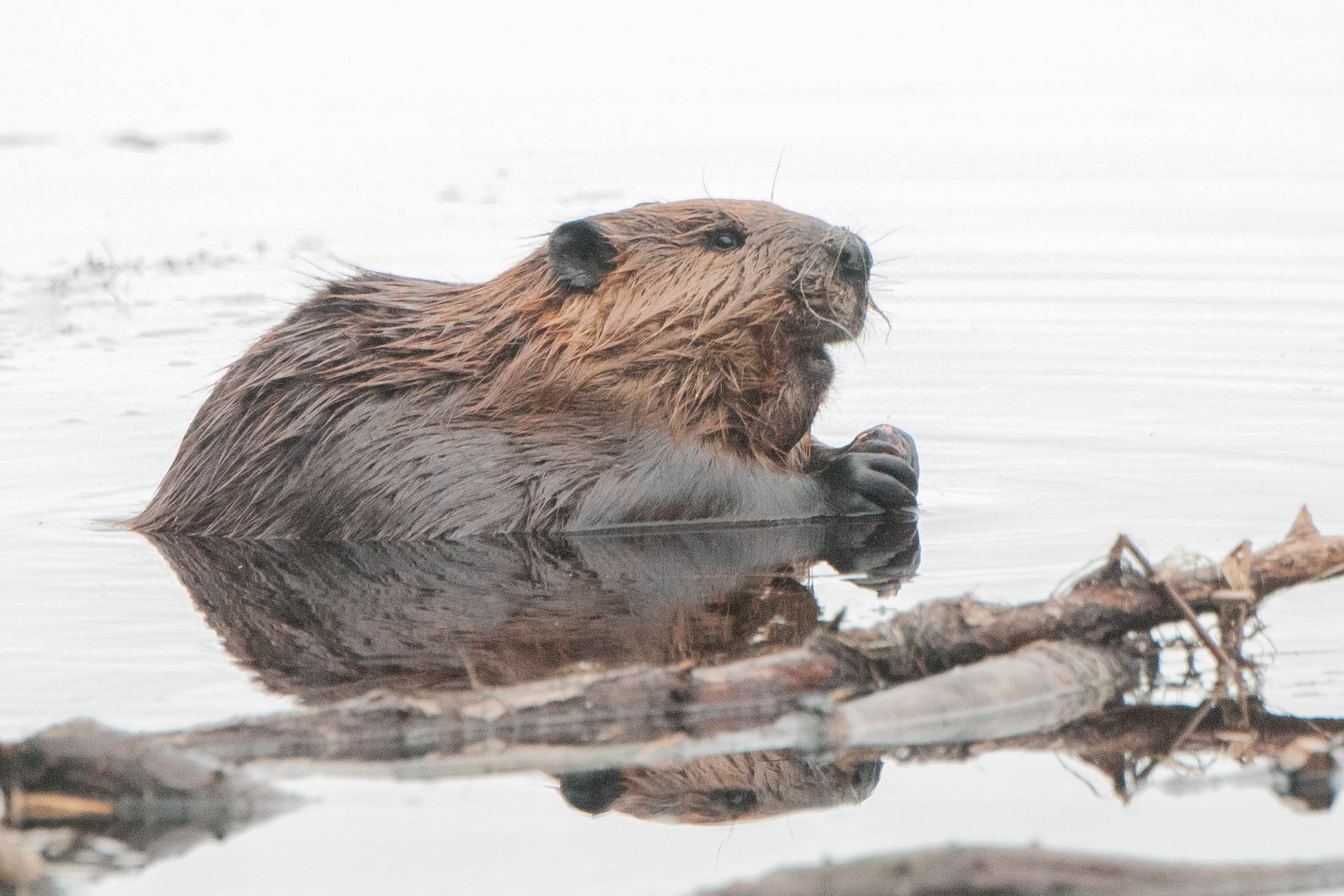The American Beaver

Beavers are the largest rodents in North America and they’re semiaquatic—they live in water and on land. Their homes are called lodges, which they build from sticks and mud, but they also build dams. These dams slow the flow of water from streams, which forms ponds.
Look For Evidence:
If you look around areas with beaver activity, you can sometimes see trees or sticks that the beavers have chewed on. In the evening, you may see them swimming—or even hear them slap their tails on the water! This is how they warn one another of danger.
Want to see a beaver tail-slap in action? Check out this educational video from Maine Outdoor School at 5:13!
Why protect wetlands?
Sometimes beaver activity can flood places that humans use, such as roads and hiking trails. But, it’s important that we protect wetlands for beavers to build their lodges and dams. The ponds they create provide habitats for many plants and animals. Their dams may also help to clear pollution from streams!
Beavers are just one species that FBC protects when we protect wetlands. The wetlands and associated uplands at Corea Heath provide habitat for inland and coastal waterfowl and wading birds, migrating land birds, rare plants and other unusual plant communities. Visit the Maine Department of Environmental Protection to learn more about Maine’s wetlands.

